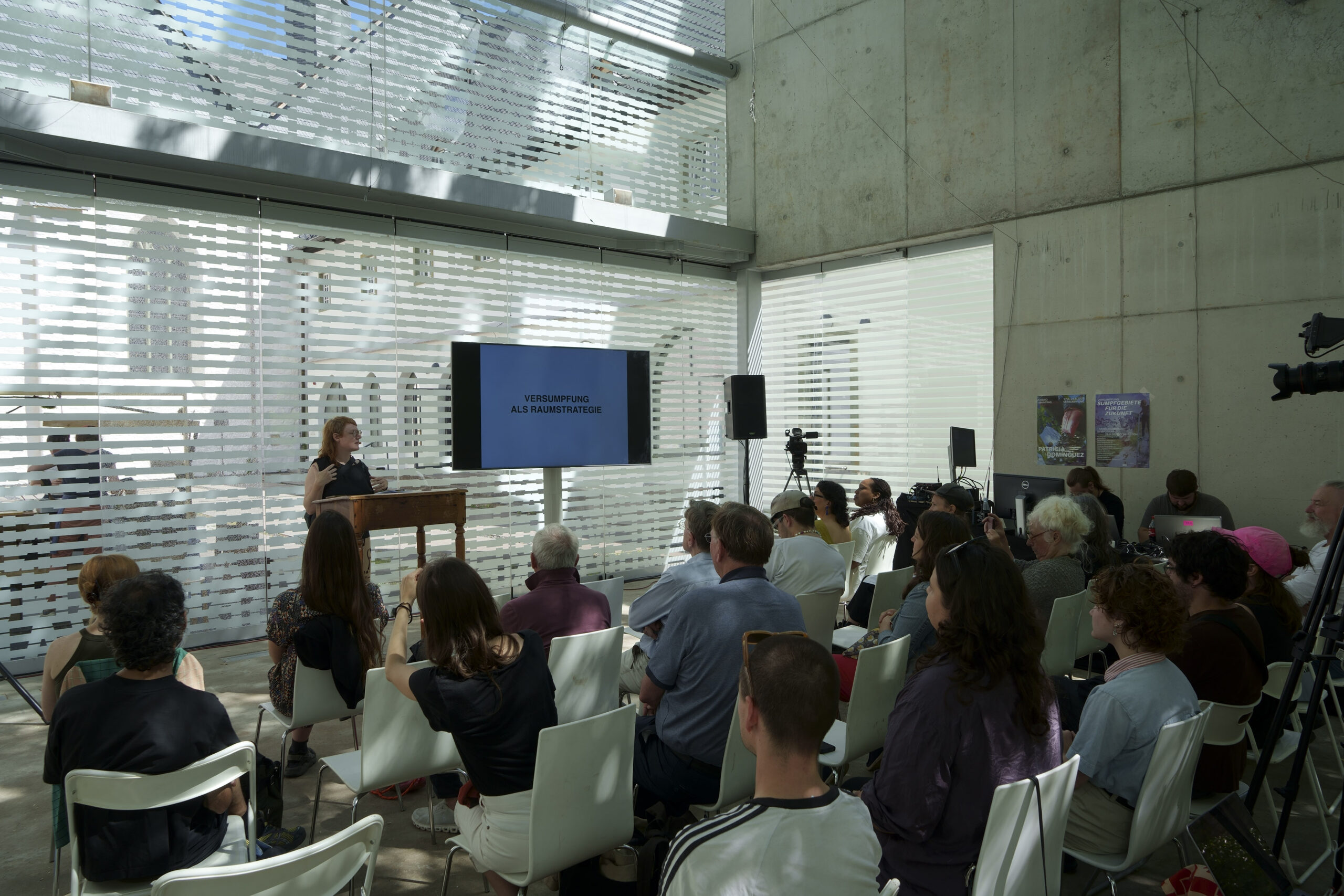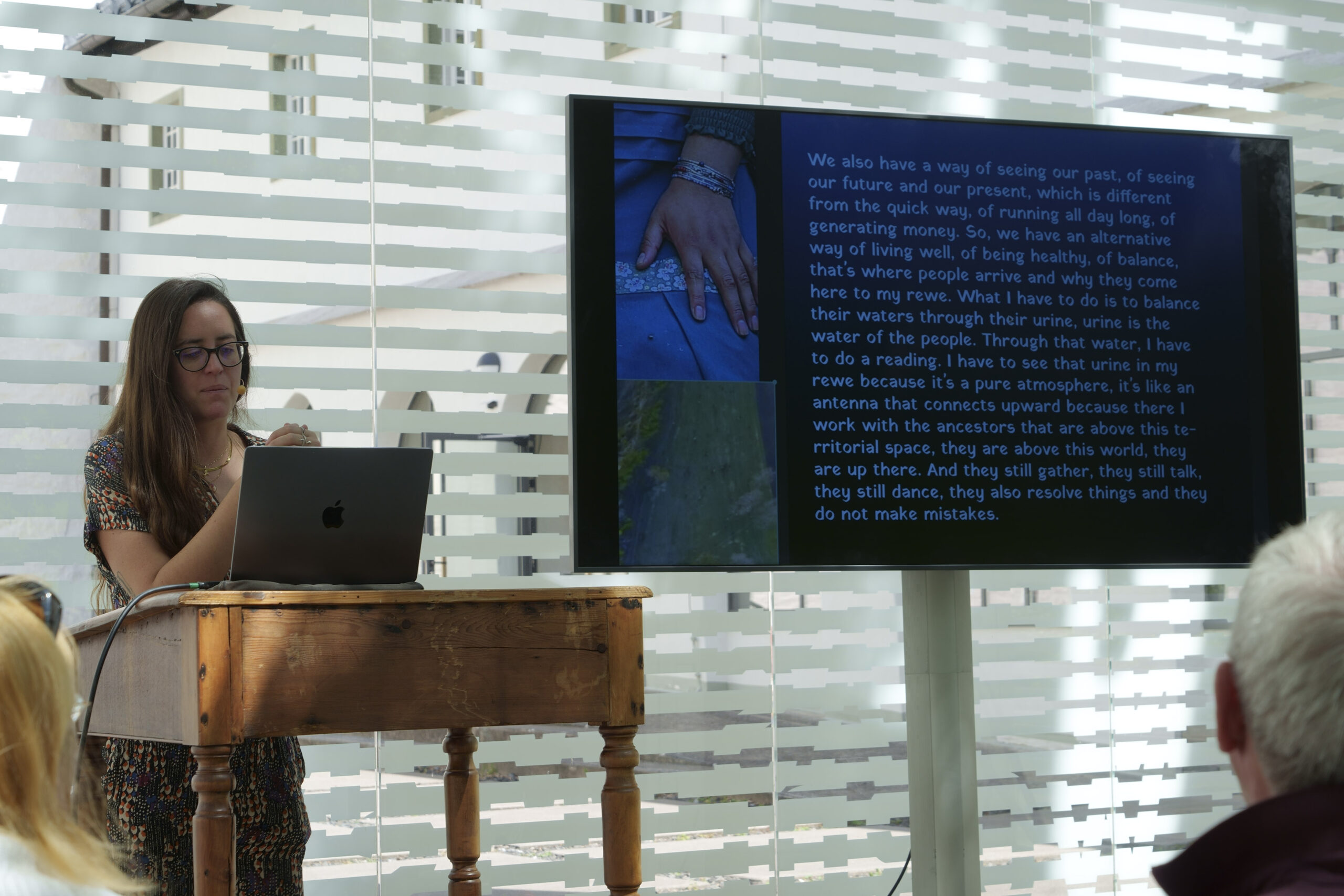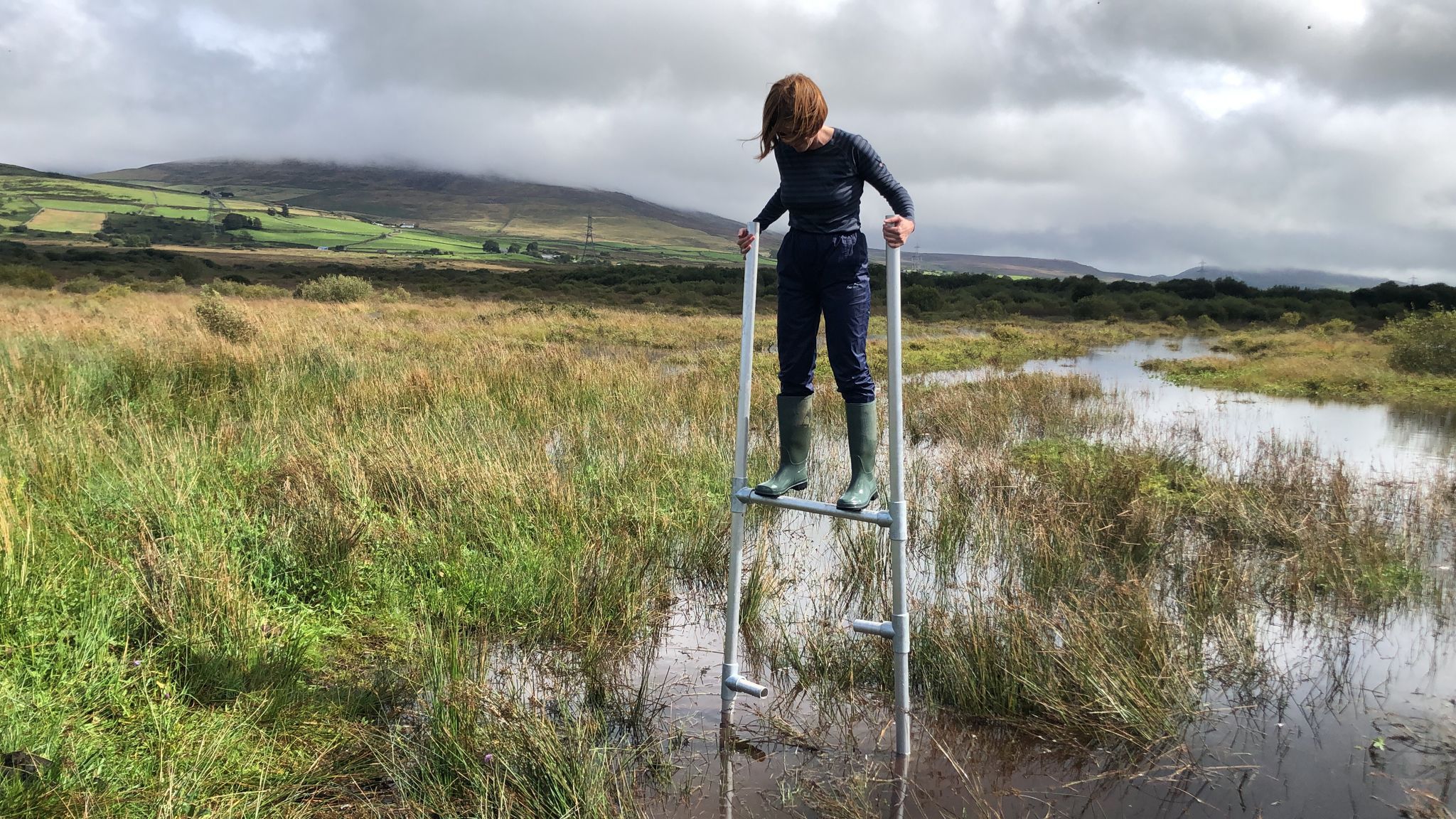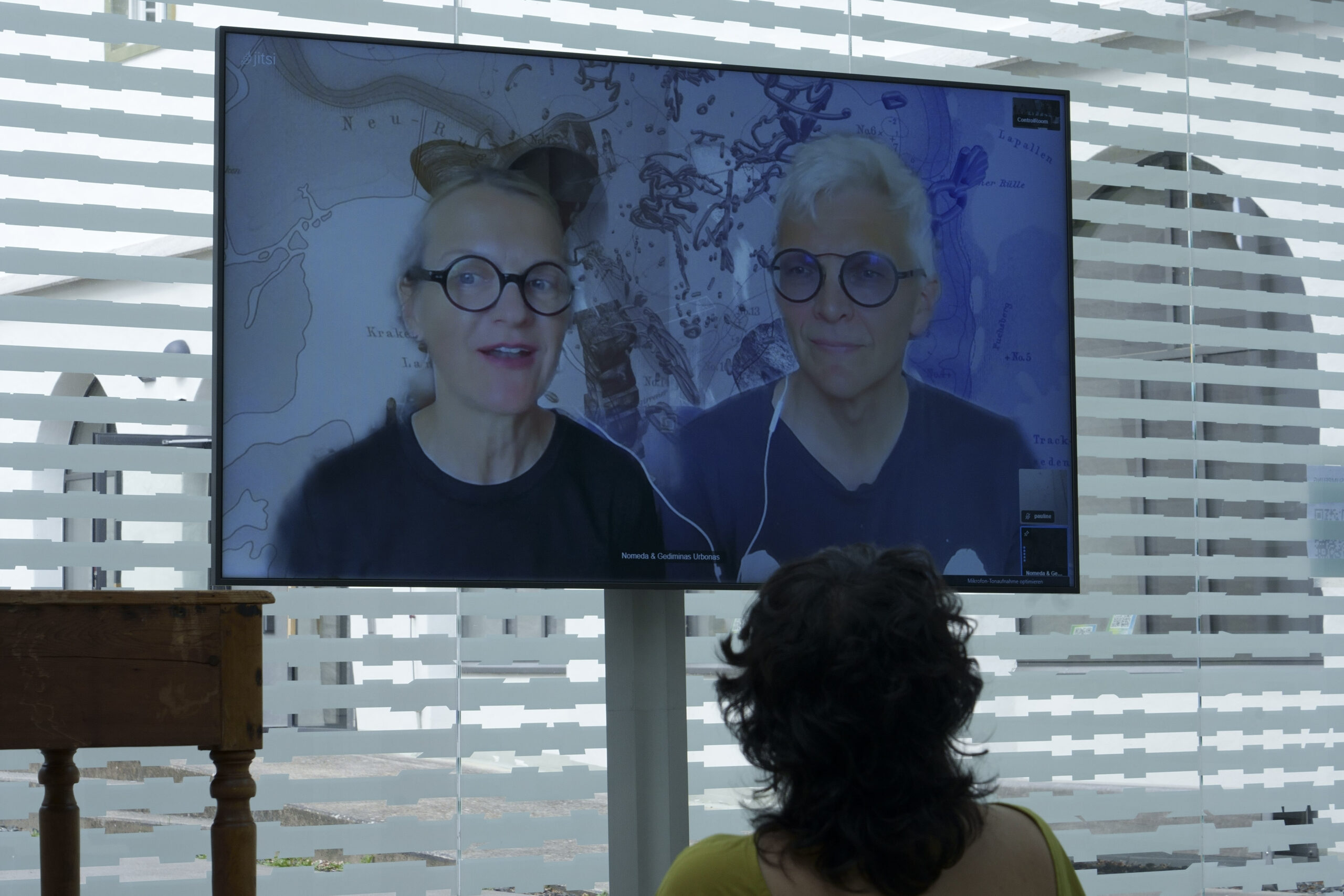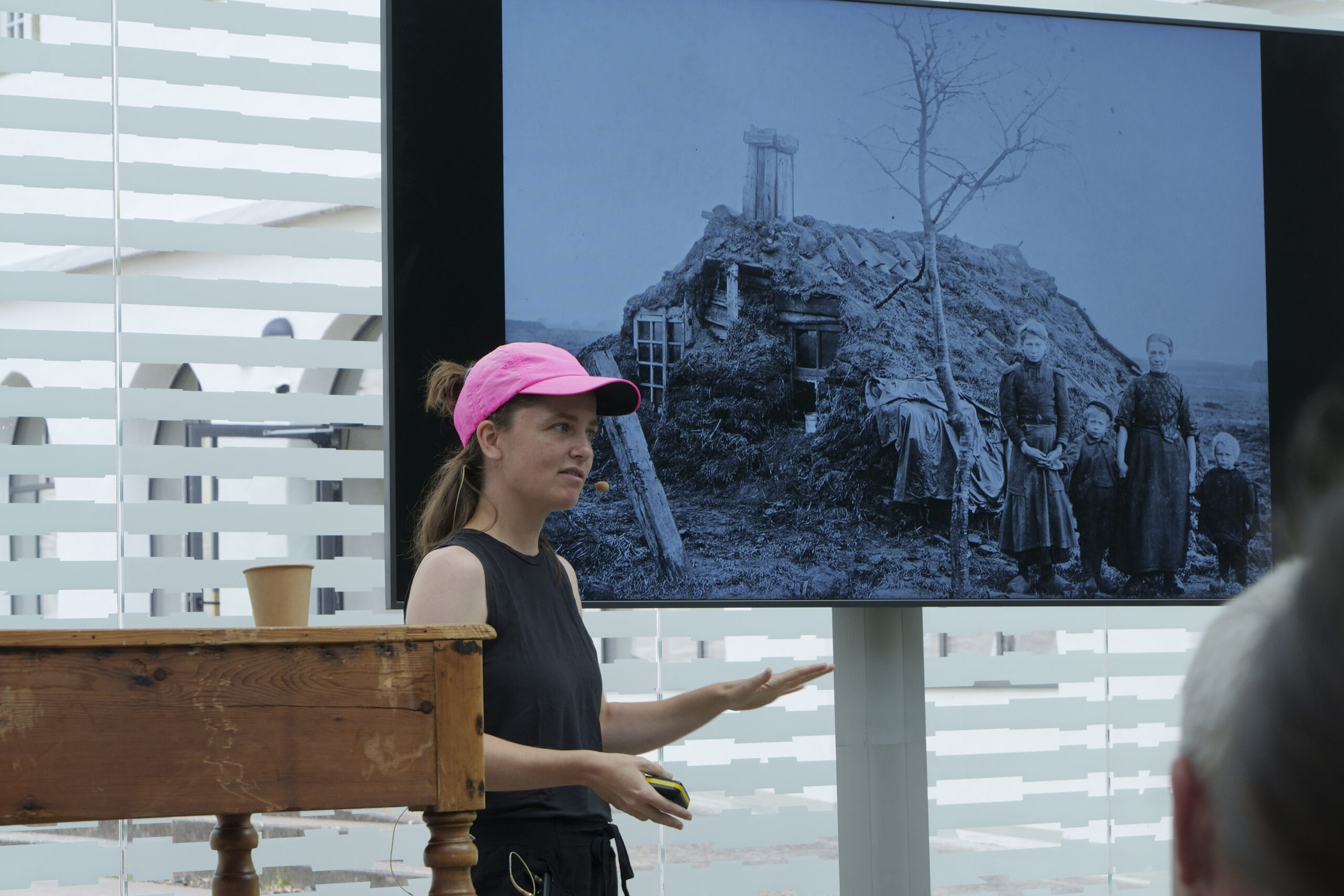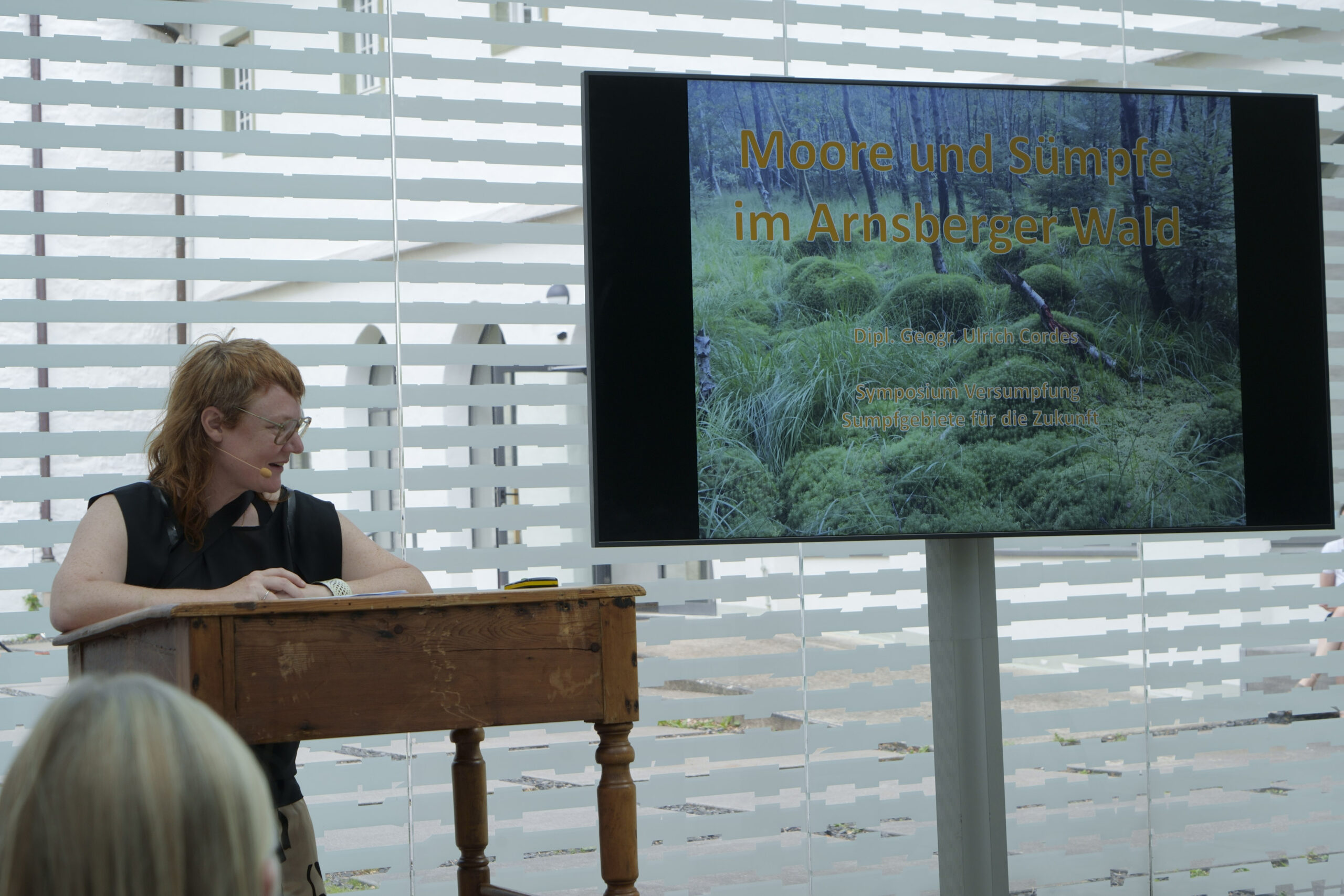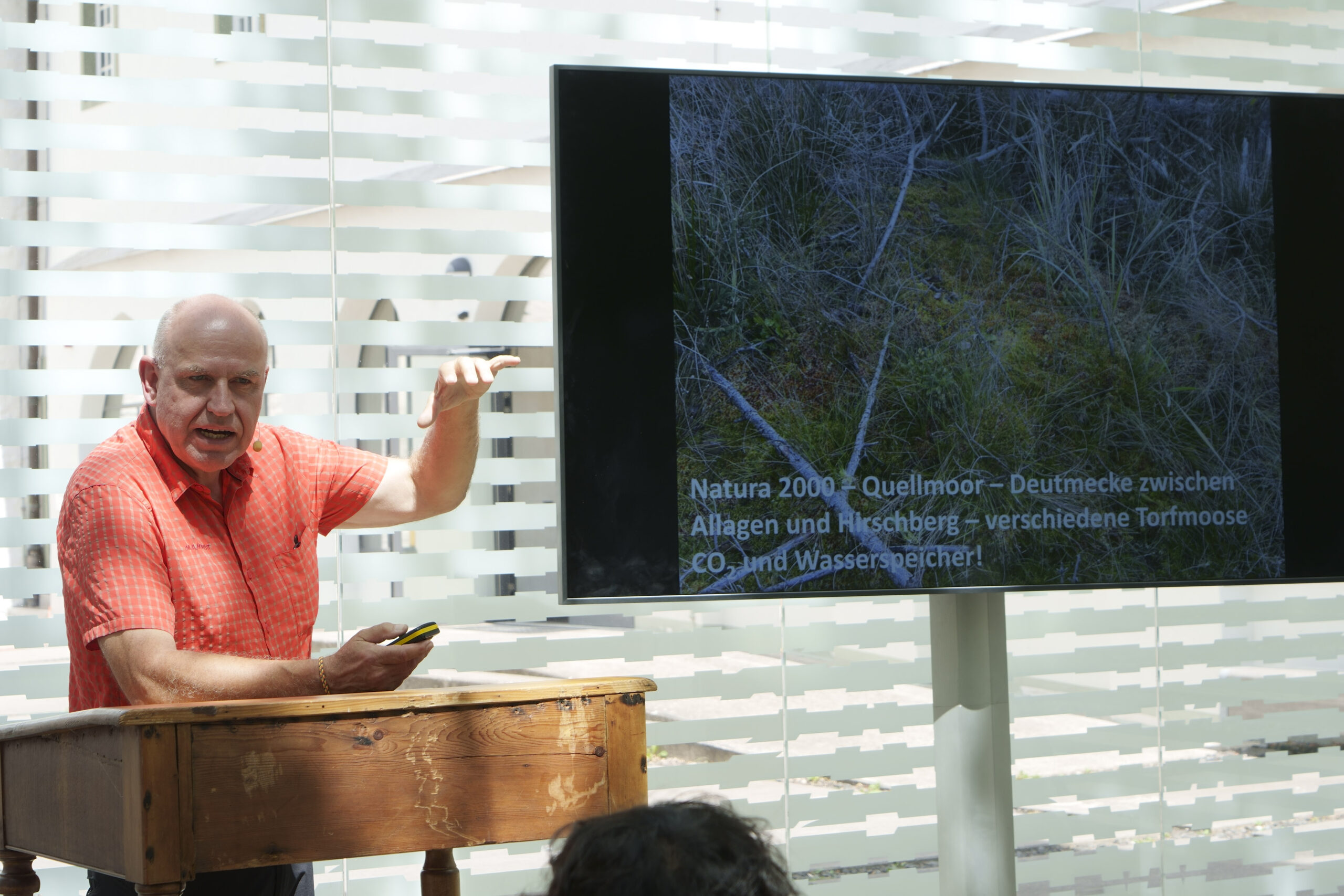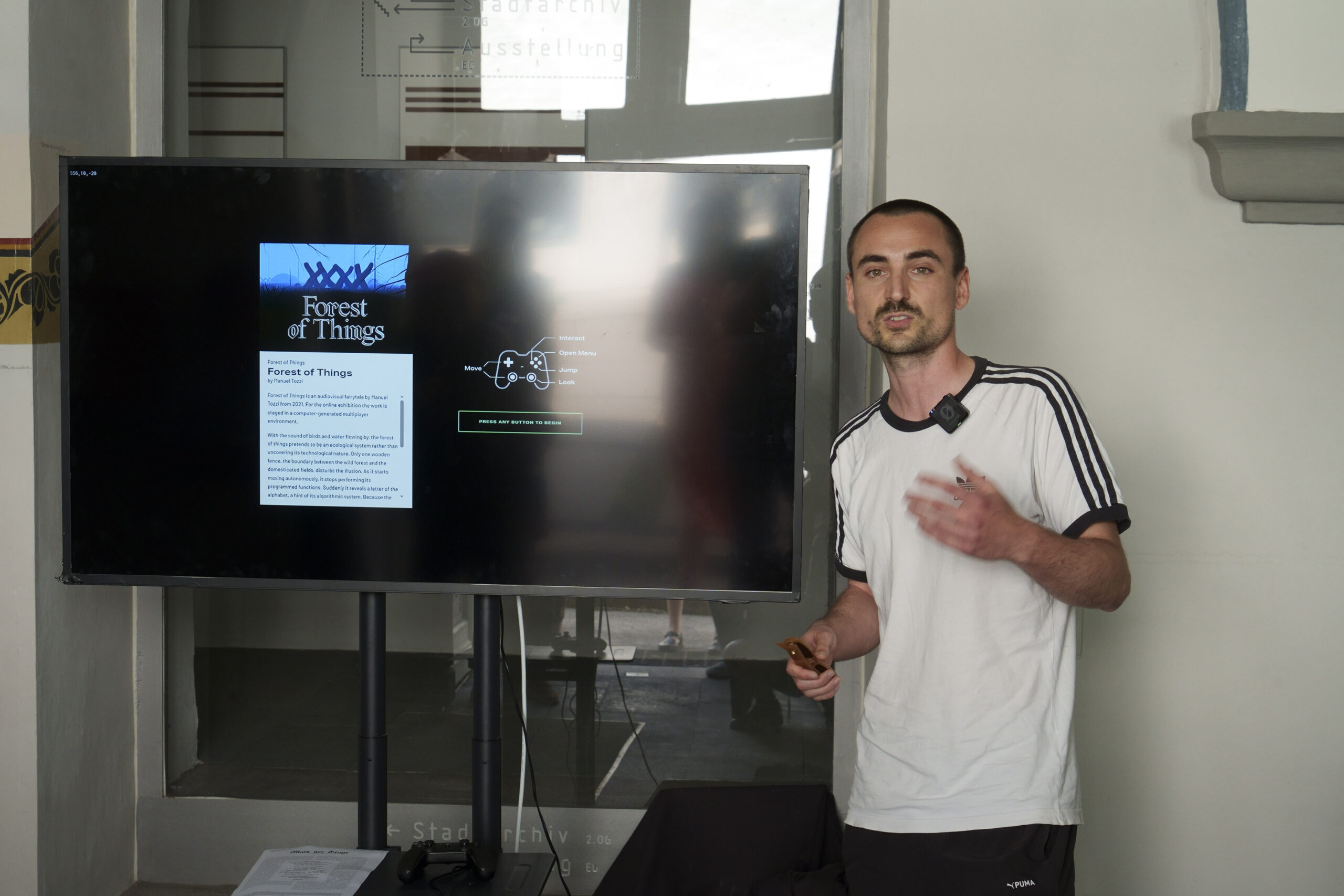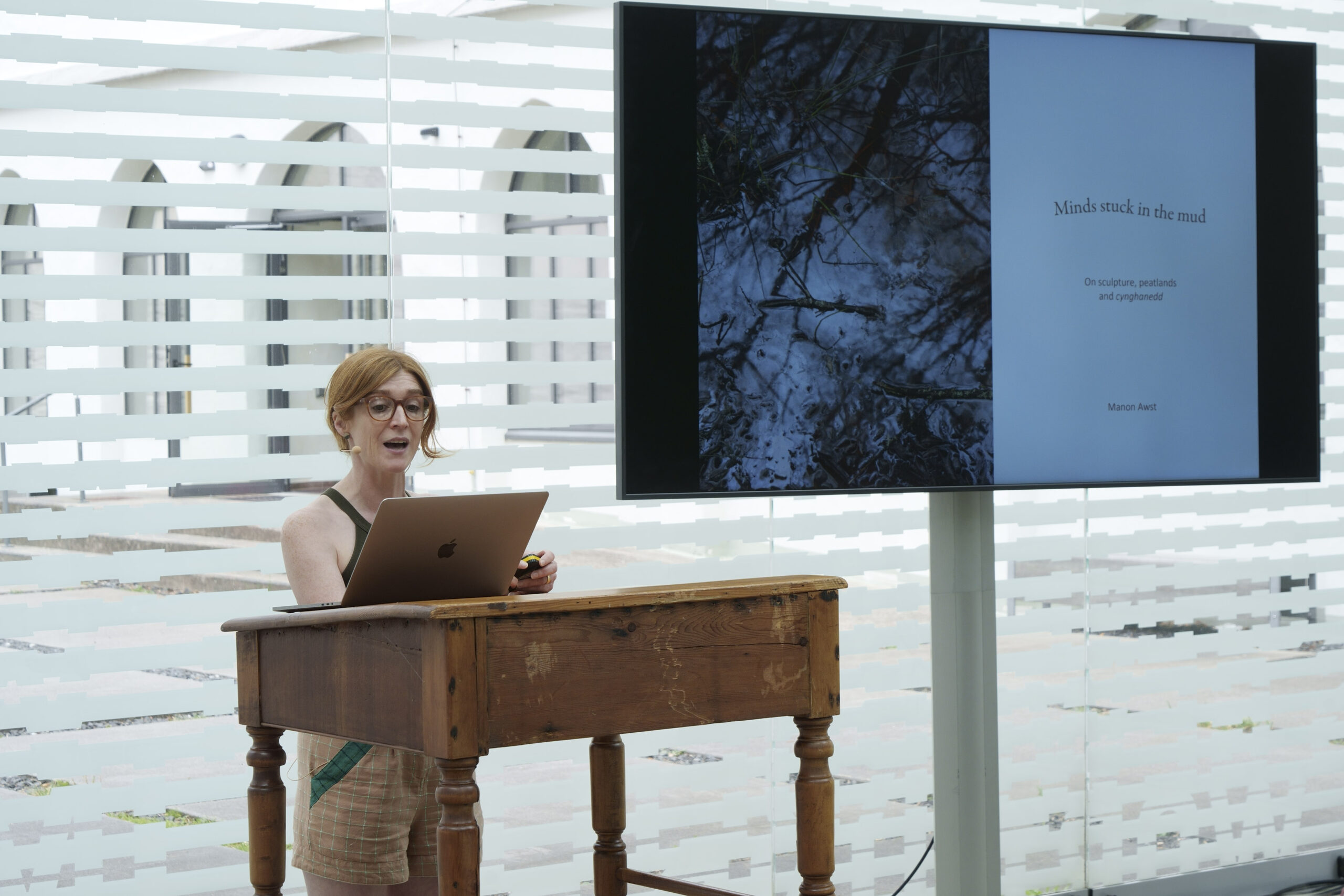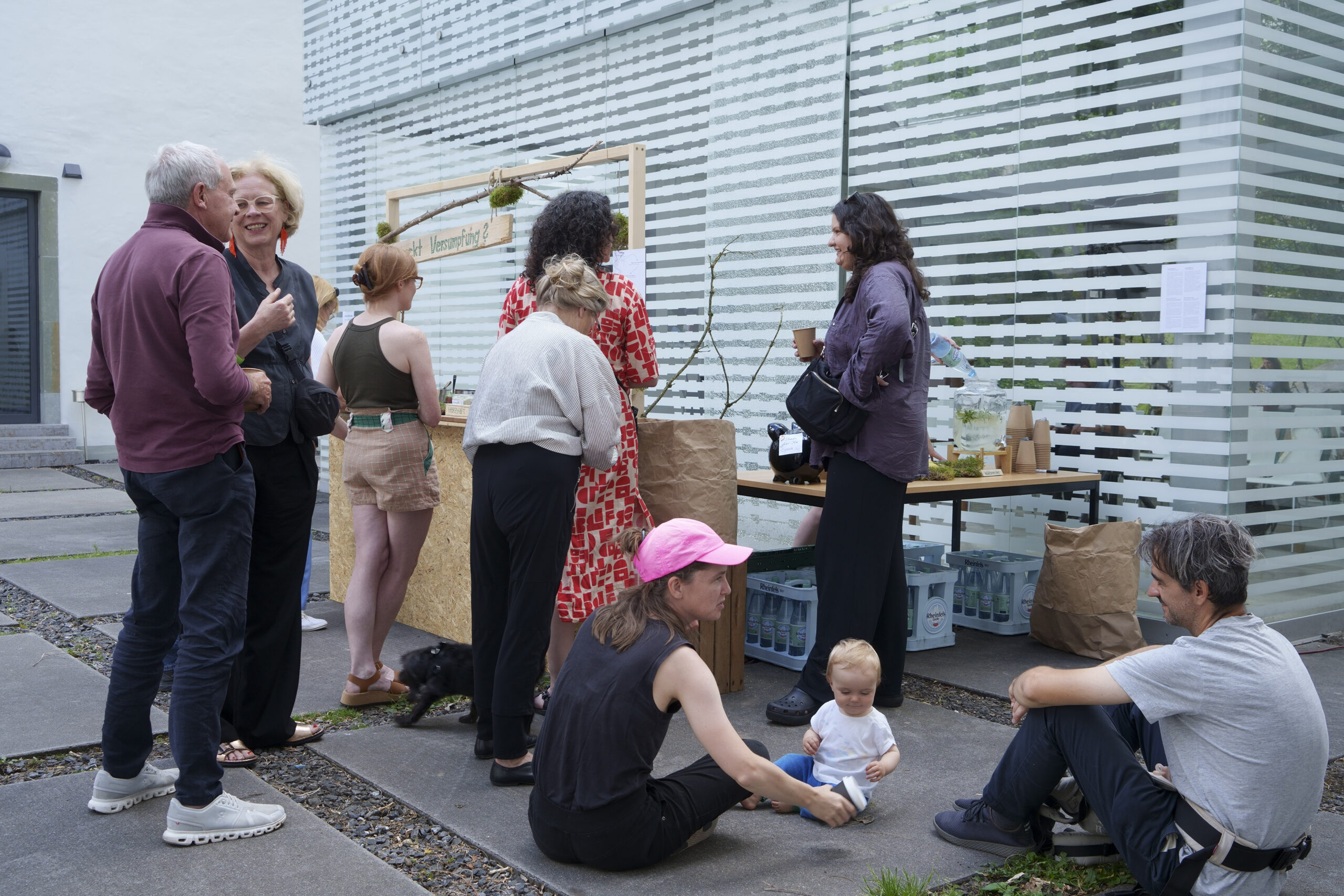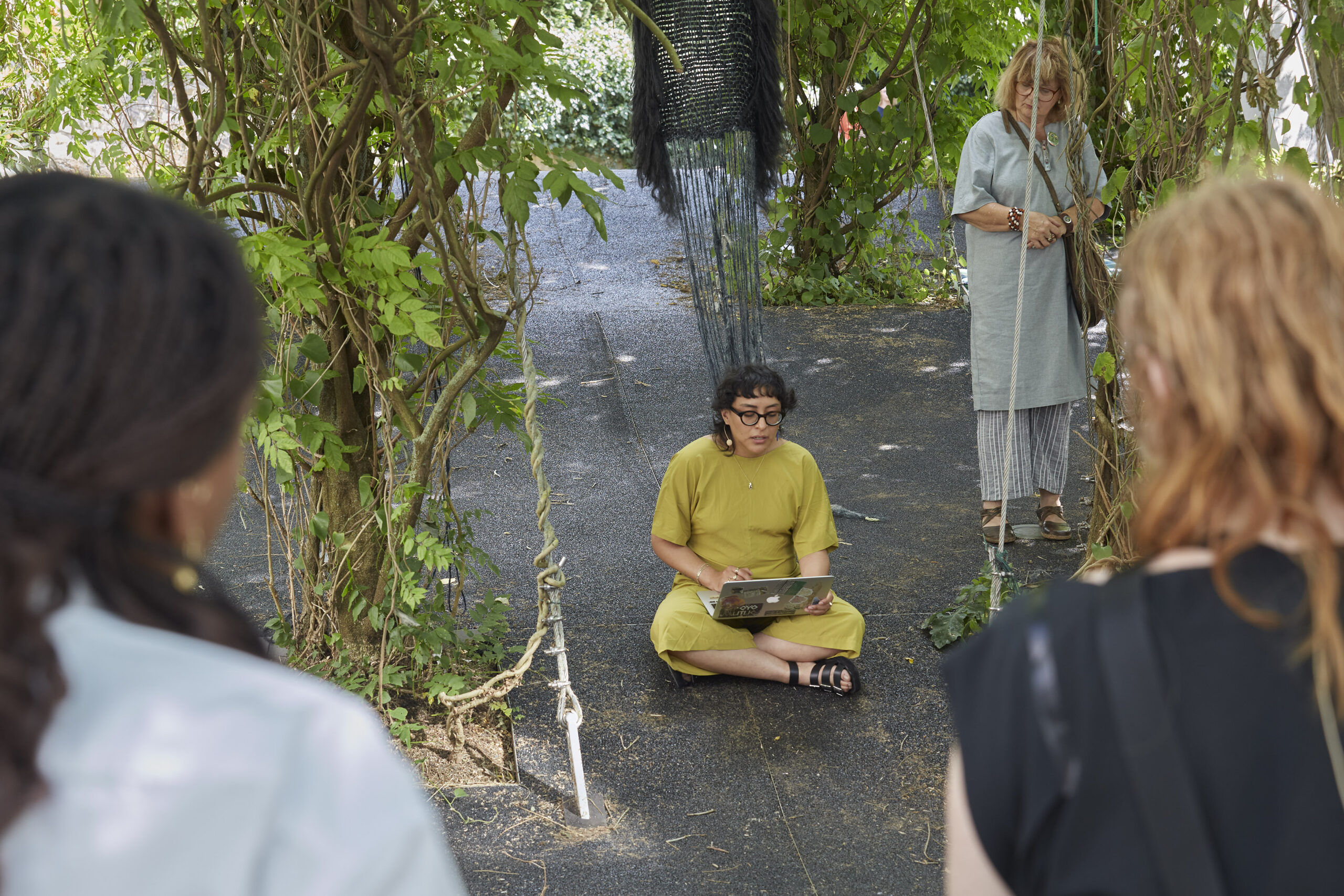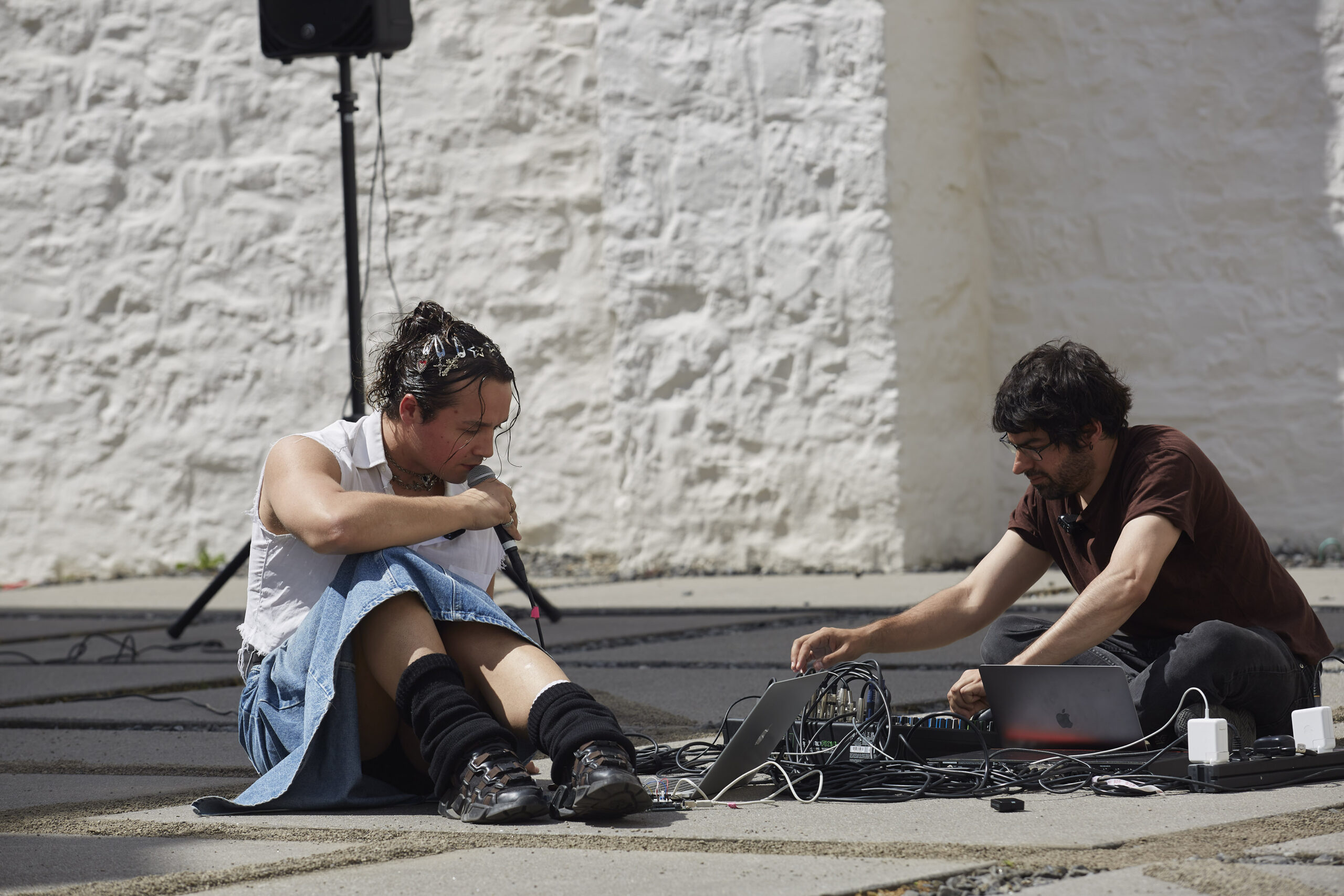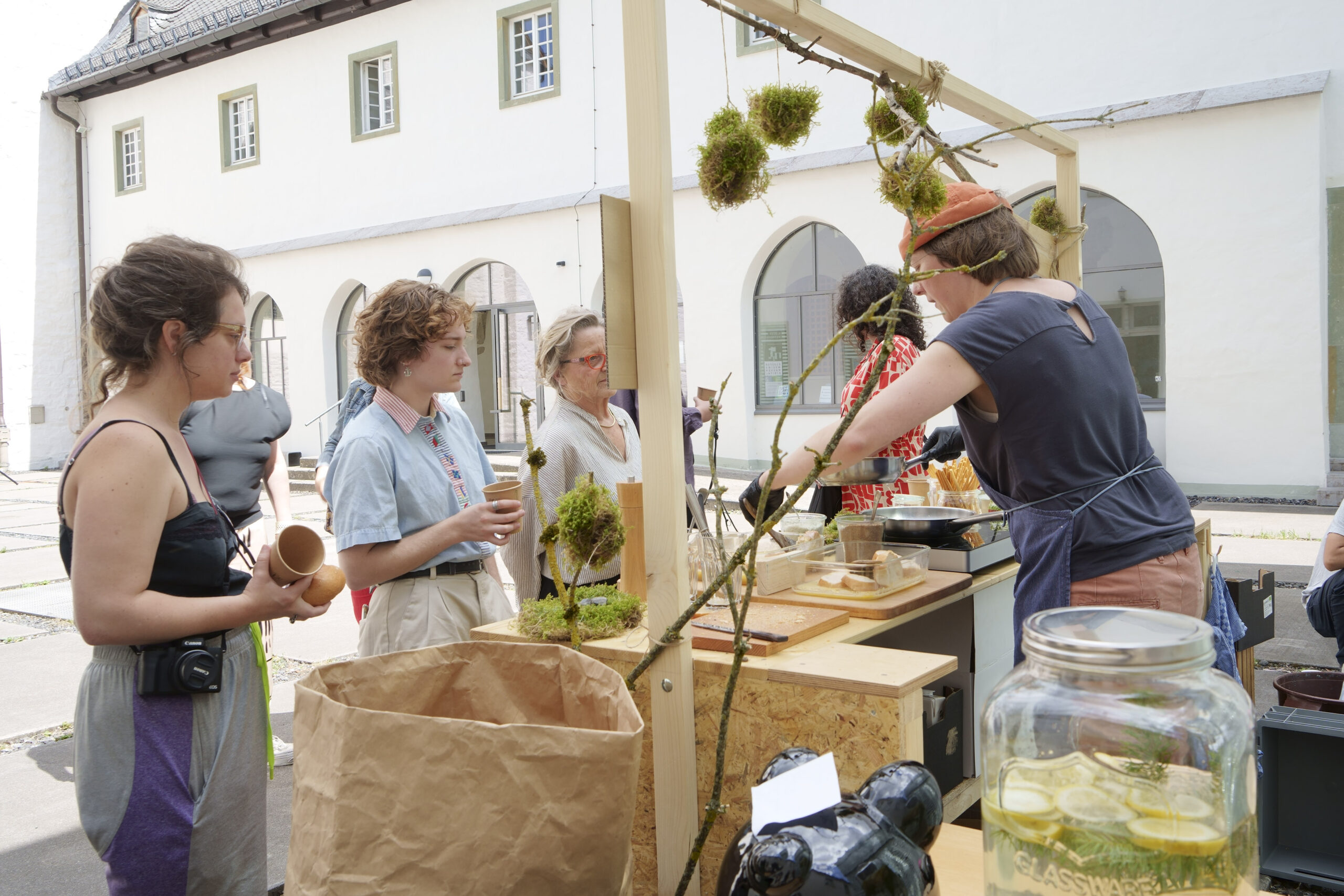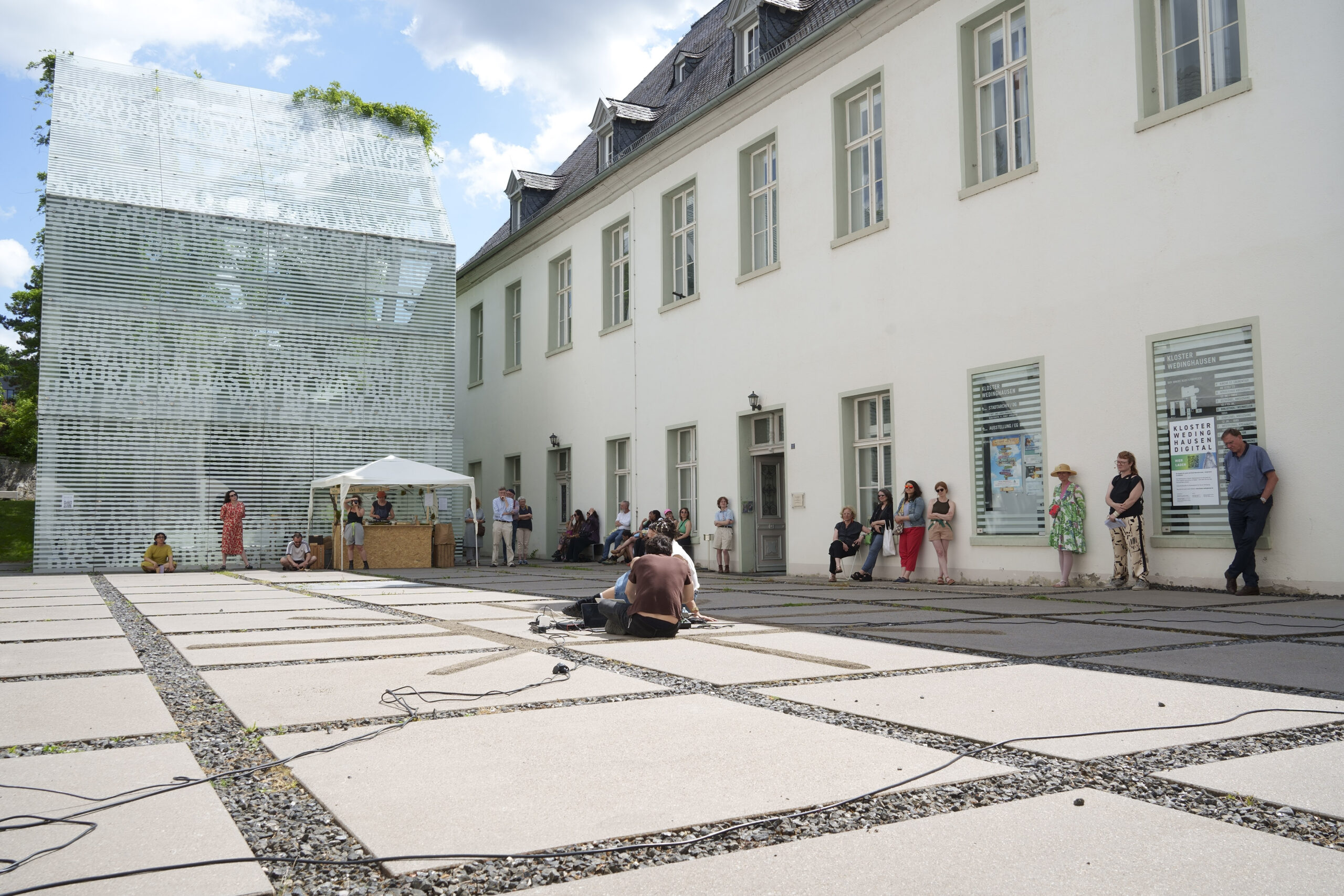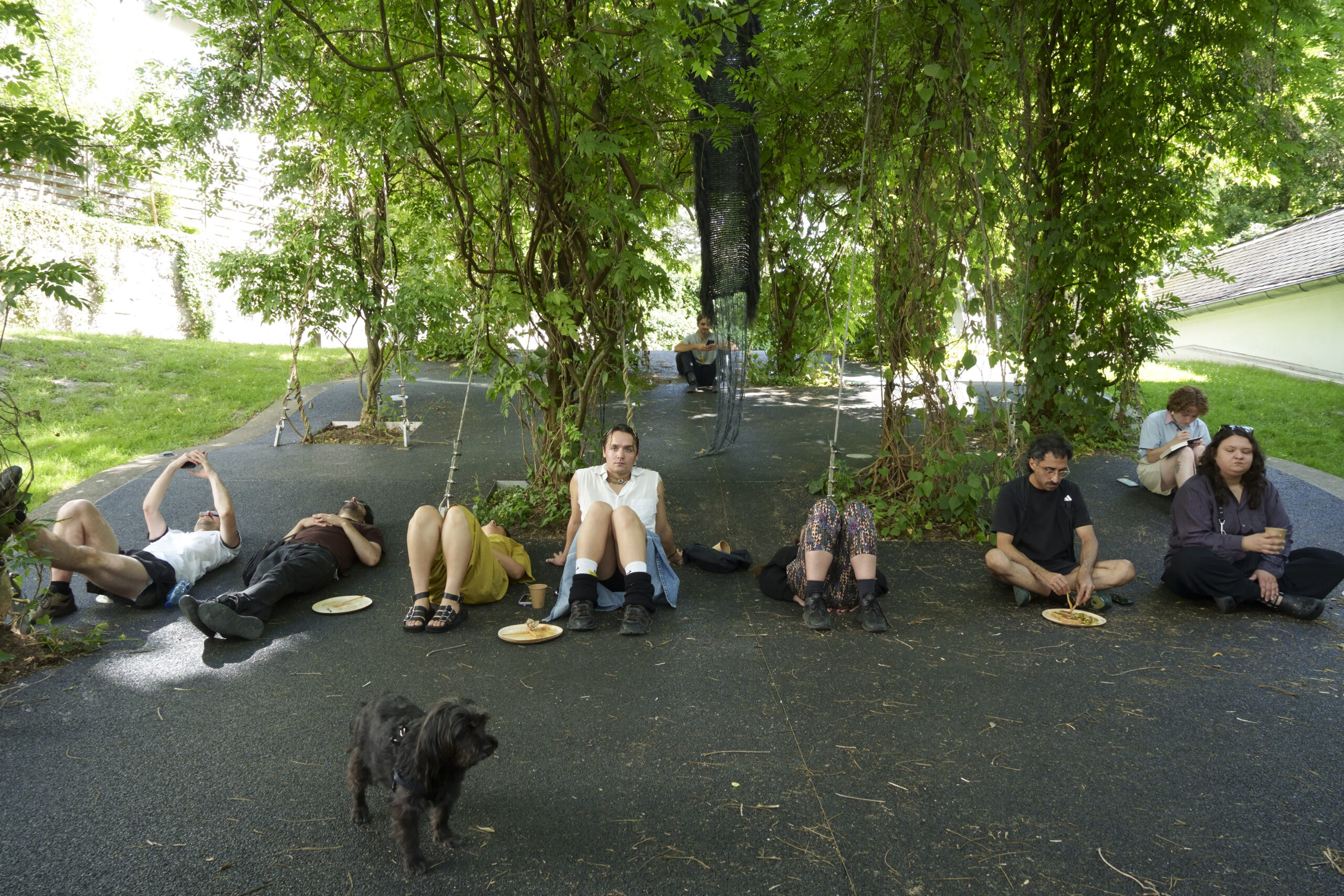PANEL / SYMPOSIUM: Wetlands for Future
SWAMPING
28. Juni
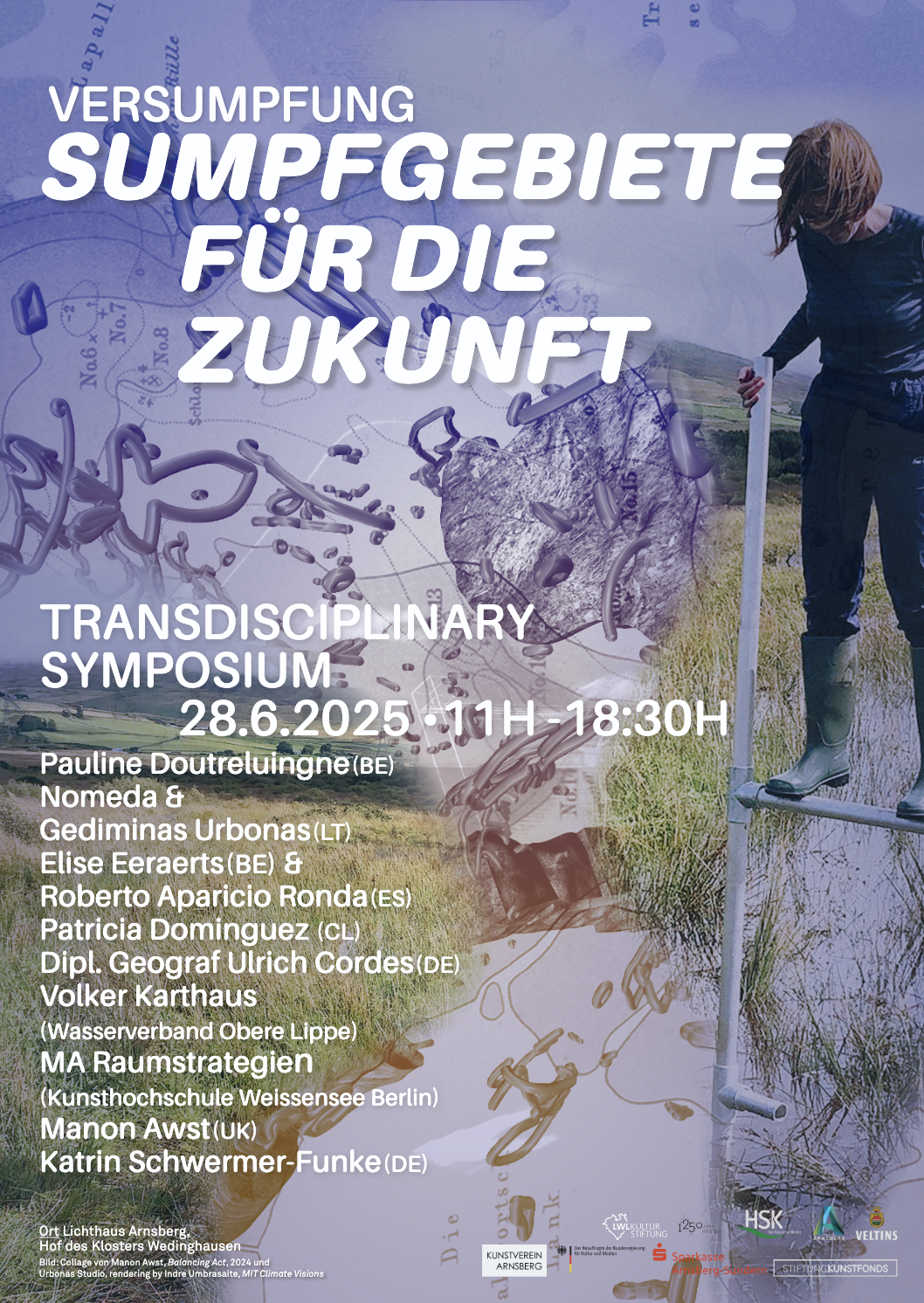
Venue: Lichthaus Arnsberg (Kloster Wedinghausen), Klosterstraße, Arnsberg
The panel WETLANDS FOR FUTURE brings together ecologists, students, artists and curators who deal with the future and the past of wetlands. The starting point is the question of how artists explore the swamp as a poetic, social and ecological potential and as a hybrid space. For centuries, the concept of the swamp was demonised as a way of dealing with the uncanny, the unknown, the uncertain and the unstable. These prejudices are to be recontextualised based on the current knowledge about the wetlands in light of the effects of climate change.
The local iniative SPONGE FOREST, for example, which explores swamps as a spatial and ecological strategy for biodiversity and the regeneration of forest ecosystems, will be presented by local experts.
The mission of the annual programme SWAMPING (2024-2025) is to raise public awareness of the principle of wetlands and swamping as an ecological strategy. This is not only about the actual landscape in its physical presence, but also about the landscape as a mental imagery or model. SWAMPING is to be understood as an active concept. Its inherent fluidity brings together new and old indigenous ways of thinking and calls for a paradigm shift. Finally, we discuss what it means to make exhibitions and artistic works in ‘wet’ spaces (on, in and under water). New paradigms in exhibition practices, such as the transition from “dry” to “wet” exhibition spaces, as well as the development towards future orientated virtual and augmented spaces will be tested and discussed.
Saturday, 28 June 2025
11:00 – 11:30 Introduction Pauline Doutreluingne (BE) – SWAMPING as a spatial strategy
11:30 – 12:00 Patricia Dominguez (Chile) – presentation of her artistic practice (EN)
12h - 12:30h Elise Eeraerts (BE) & Roberto Aparicio Ronda (ES) - presentation of their artistic practice (EN)
12.45h - 13:30h Dipl. Geograf Ulrich Cordes: lecture on wetlands (DE)
Volker Karthaus (Wasserverband Obere Lippe): lecture on the initiative SPONGE FOREST in the Arnsberg Forest (DE)
13:30h - 14:15h Manon Awst (UK): Stuck in the mud, a performance lecture
14:30h - 15:30h MA Spatial Strategies of Kunsthochschule Weissensee Berlin - Performances, virtual and augmented-reality-works
16h - 17h Nomeda and Gediminas Urbonas (LT) - online lecture: Amphibian Pedagogy Meets the Wet Ontologies of the Swamp (EN)
17h - 18:30h Roundtable discussion with all participants: on expanded exhibition practices in wet and immersive spaces
Moderation: Pauline Doutreluingne
What does swamping taste like? The transdis-ciplinary symposium will be accompanied by the culinary food performance Schwammbrote by Katrin Schwermer-Funke, where the principle of reactivation through the absorption of fluids is reflected in traditional dishes.
Bios participants
Gediminas & Nomeda Urbonas curated the Swamp School at the 16th Venice Architecture Biennale 2018. The book ‘Swamps and the New Imagination: On the Future of Cohabitation in Art, Architecture and Philosophy’ is due to be published in 2026 (Sternberg, MIT Press). Gediminas is Associate Professor at the MIT Program in Art, Culture and Technology, and Nomeda is a Research Affiliate at MIT.
Ulrich Cordes Ulrich Cordes studied geography, specialising in landscape ecology, at the University of Münster and at the Institute of Geobotany at the University of Hanover. He has been self-employed as managing director of the nature and landscape planning office LökPlan GbR since 1994. In 2023, he organised numerous excursions to the moors in the Arnsberg Forest in cooperation with BUND Soest.
Volker Karthaus is a landscape architect and has been Managing Director of the Wasserverband Obere Lippe since 2013. Among other things, the WOL carries out numerous floodplain renaturalisation and rewetting projects.
Students of the advanced master's programme ‘Spatial Strategies’ at the Berlin Weissensee School of Art develop spatial / artistic strategies in the form of augmented and virtual reality works, video installations, performances and other ephemeral formats around the theme of SWAMPING from a global perspective. Participating artists are Ana Fortes, Kathleen Bomani, Patricia Black, Farokh Falsafi, Pedro André Dias Serrano, Svantje Woltersdorf, Manuel Tozzi, Liangshiyu Liu and Bruno De Marco.
Elise Eeraerts & Roberto Aparicio Ronda's projects have been taking place in nature or in the public space of cities since 2012, with site-specificity, history and material transformations as the subject of their research. They have done extensive research and work around the Kirkpatrick Swamp (MA, USA).
Patricia Domínguez is an artist and educator who lives and works in Puchuncaví, Chile. Domínguez works with watercolours, ceramics, sculptural assemblages and video installations to create shrine-like images that draw from a visual vocabulary derived from plants, mass market products, corporate wellness programs and the digital world. Dominguez is also the founder of Studio Vegetalista, an experimental platform for ethnobotanical research in Chile.
Manon Awst is a North Wales based artist. Through a sculptural, performative practice, she explores how materials stick to and transform locations and communities. Her creative research on peatlands began in 2022, and a Future Wales Fellowship (2023-25) enabled this work to continue in collaboration with the National Peatland Action Programme. Manon has shared Peaty Patterns at IMMA Dublin, HBK Braunschweig, the IUCN Peatland Conference as well as contributing to UP Project’s Constellations Assemblies.
Pauline Doutreluingne works as a curator, lecturer and filmmaker in Berlin and since 2022 as artistic director of Kunstverein Arnsberg. In her work, she tries to stimulate cultural and ecological differentiation and deconstruct social ideas that stem from colonial thinking. She is a professor and head of department at the Spatial Strategies programme at the Weißensee School of Art Berlin.
Katrin Schwermer-Funke tracks down the interfaces between everyday life, culinary art, art and nature. Traditional techniques such as fermentation or dyeing inspire her just as much as the color, shape and taste spectrum of different root vegetables. In her work and workshops, she combines cultural history, ecological issues and sensory experiences to create holistic delights.
Photo credits: Michel Ptasinski
